If you’re planning a trip to Peru, or you’re already there, I bet you have a list of must try Peruvian foods. But what about drinks? From alcoholic drinks and juices to sodas and warm teas, there are actually a lot of unique drinks in Peru worth trying! Here I will give you a break down of all the typical Peruvian drinks you should make a point of tasting during your time in Peru!!
Alcoholic Drinks
Chicha de Jora
Chicha de Jora is probably the most traditional Peruvian beverage of the Andean Region. It is a drink made by fermenting corn and was drunk by the Incas. Chicha de Jora was a sacred beverage that was used during festivities, such as Inti Rami, or party of the sun, where it was used for offerings and drunk by all the people celebrating. It was also a social beverage that they drank while working on their farms. In fact, the tradition was that they would take turns working on each other’s farms and whoever’s farm they were working on would provide Chicha de Jora, as well as food, for everyone else.
While it is alcoholic, it only has a small percent of alcohol content. You can find this drink for around 3 – 7 soles at Chicherias around Cusco. You can identify a Chicheria by a red bag or piece of cloth hanging outside the door. And it always comes in a giant glass!
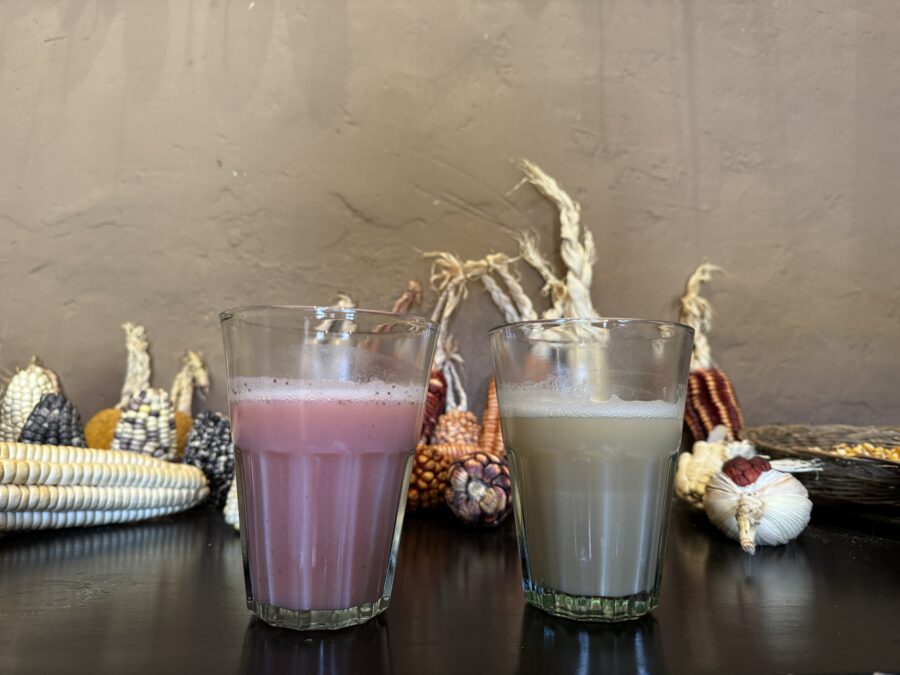
Frutillada (Chicha de Frutilla)
Frutillada is like a cocktail version of Chicha de Jora. It mixes the original with a fruit juice made from Andean strawberries. It’s really good and probably one of the best Peruvian drinks in my opinion. You can find it almost anywhere that has the original.
Pisco
Peruvian Pisco is a liquor made from grape juice. If you’ve been to Chile before, you’ve probably tried the Chilean pisco, which, if you ask me, is similar, but if you ask a Peruvian or Chilean, is quite different. Actually there is some controversy between the two countries over where pisco came form originally. However, Peru has the upper hand in the argument since they have a city named Pisco.
Pisco Cocktails
Many different Peruvian cocktails include pisco. Four of the most famous cocktails with Pisco as the main ingredient are the Pisco Sour, the Chilcano, Té Piteado, and Machu Picchu.
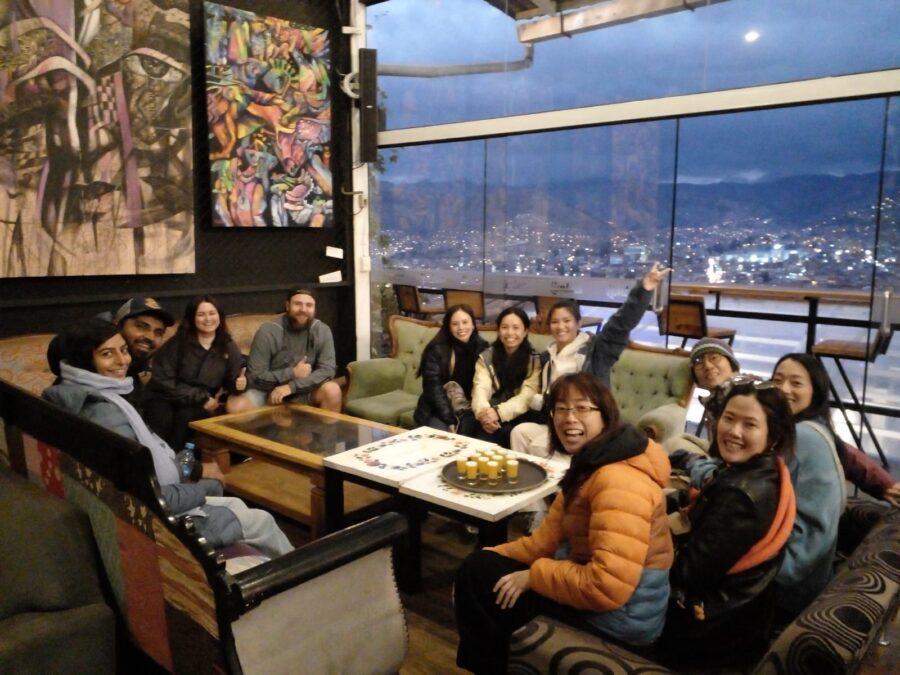
You can often try a Pisco cocktail (especially Pisco Sour or Maracuya Sour pictured above) during a free walking tour of Cusco or Lima, one of the best activities to do when you first arrive. I definitely recommend the one linked here.
Pisco Sour
The Pisco Sour is actually the national drink of Peru, so of course you have to try it during your time here. It is made of pisco, sour citrus juice (lime juice, though, fun fact, the Peruvians call limes lemons), sugar or syrup (jarabe de goma), and egg whites. It’s a sour cocktail, similar to a Whiskey Sour, but with pisco instead. You can find it at almost any restaurant or bar.
There is also a variation on the Pisco Sour, made with maracuya, or passion fruit, juice, appropriately named Maracuya Sour. This is also delicious and worth trying.
Chilcano
Chilcano is another Peruvian cocktail made of pisco, this time mixed with ginger ale, a little bit of lime juice, syrup and Angostura bitters. Maybe not quite as interesting as the Pisco Sour, it is also a popular choice in most restaurants and bars.
Té Piteado

This is a warm and cosy alternative for a pisco cocktail, made of warm tea and pisco. In the evenings, during festivities and weekends especially, you can also find people selling this on the street.
Machu Picchu
Named after Peru’s most famous attraction, this popular cocktail has three layers of different colours, making it almost as fun to look at as it is to drink! It’s made of pisco, grenadine, orange juice, and mint.
Cusqueña Beer
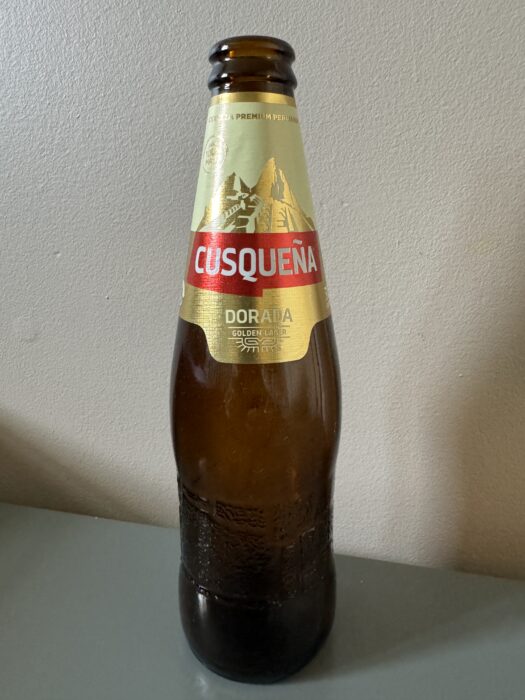
In addition to the more unique Peruvian alcoholic beverages, you can’t go wrong with a good old Peruvian beer. The most popular brand is Cusqueña Beer. It comes in different varieties: Trigo, or wheat bear, Dorado, or golden, and Negra, or dark beer. Also popular is Pilsen Callao, and the cheapest option: Golden.
In addition to these major brands of beer, there are some breweries popping up, like the Cervecería Del Valle Sagrado (Brewery of the Sacred Valley), where you can find craft beer.
Non-Alcoholic Peruvian Drinks
Even if you don’t drink, or don’t want to drink, alcohol, there are tons of typical Peruvian drinks you can try.
Juices
Chicha Morada
Like the Chicha de Jora, Chicha Morada is a beverage made of corn, but this version is non alcoholic. Chicha Morada directly translates to purple corn, so you can probably guess what it’s made of. This is one of the most popular non-alcoholic Peruvian drinks, and definitely worth getting your hands on! Personally, I really like it.
Fresh Fruit Juice
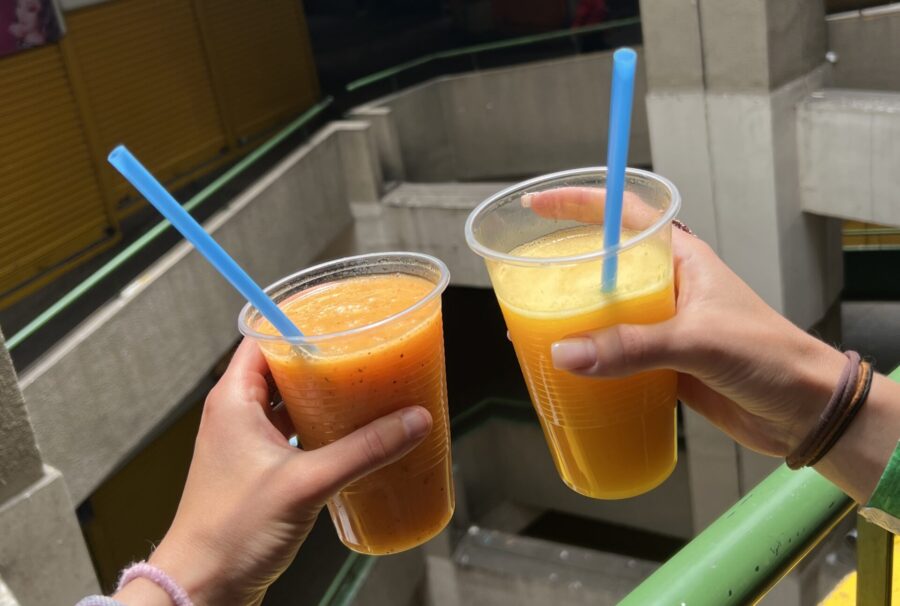
Of course, fresh fruit juice isn’t innately Peruvian, but it’s really easy to find and incredibly delicious in Peru! If you go to any market you’re bound to find a section with fresh juices. Just pick what fruits you want and they’ll make it for you. If you’re just arriving in Peru/South America I would recommend choosing fruits with peels. These juices are so delicious and quite cheap as well for a very affordable price of 5 – 12 soles. Plus you usually get a huge portion.
Soda
Inca Kola

You’ll see this soft drink in just about every convenience store. It has a vibrant yellow color and tastes sort of like cream soda. In fact, it’s so popular that when coca cola was expanding around the world, they noticed their sales in Peru weren’t as high as in other places. When they came to discover why, it turned out that the Peruvians were simply more interested in drinking their Inca Kola. Due to this, Coca Cola decided to just buy out Inca Kola and start producing it in Peru themselves.
Hot Drinks
Coca Tea
Whether you make it just with coca leaves in hot water or with a tea bag you can buy at any grocery store or cafe, Coca Tea (or Mate De Coca), is a very popular choice. In addition to it’s unique flavour, coca tea is meant to help with altitude sickness. Because of this it the perfect choice for when you first arrive at high altitudes. In addition to coca tea, you can also find coca candies and even coca leaves. Peruvians use the coca leaves for chewing (and then spitting out or swallowing, depending on preference), as well as for some rituals as an offering to the mother earth. Coca plants have been sacred in the Peruvian Andes since the time of the Incas. You can find out more about coca in the Coca Museum in Cusco as well.
Muna Tea
Muna is another plant native to the Andean region with medicinal properties. It is a digestive aid, an anti-inflammatory, high in iron, calcium, and phosphorus, and also helps with altitude sickness.
The herbal tea made from this plant also has these health benefits. It has a bit of a minty taste and overall a flavour less strong than the coca tea, so if you are not loving the coca products, muna tea can be another great option for when you first arrive at high altitudes.
Hot Chocolate
I know what you’re thinking, how is hot chocolate Peruvian? But the way they make hot chocolate here is different than how they make it in other places I’ve been. Instead of making it with the kind of hot chocolate powder we find in Canada or the United States, they make it directly with cocoa, and often flavour it with cinnamon and cloves.
Api

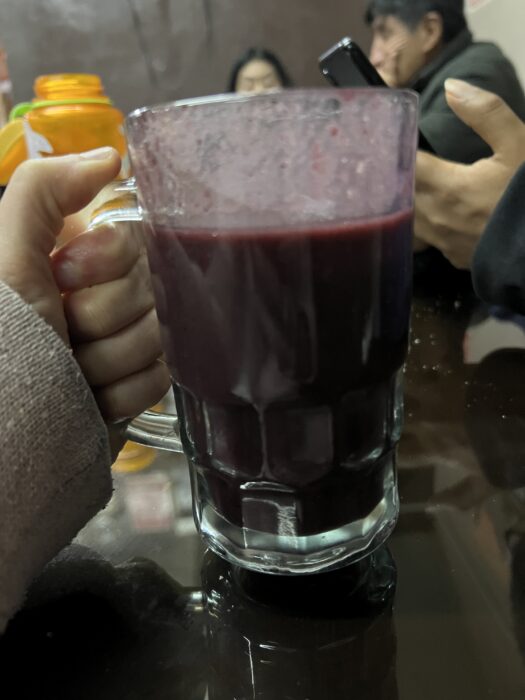
Api is another drink made of purple corn juice, like the juice Chicha Morada, but this one is served very hot. It is also thicker and more, let’s say, corn-y. But it is very delicious, especially on a cold night. And it is served with an “empanada” that is actually just a shell of fried bread, which you can dip in the api. Unless you wait for some time, at the beginning the only way to enjoy it is really by dipping in the bread as it is extremely hot.
Emoliente

Emoliente is a barley tea, made with some other herbs as well. It is another ancient medicinal drink, however, this one came to Peru with the Spaniards. So, it is not unique to Peru, but the way that you typically find it in Peru is quite interesting. Usually, you find it in the evenings on the street in a cart with many bottles of various liquids. The base is a thick, almost slimy, liquid and then they mix in portions from the other bottles and vessels. You can say the temperature you want – cold (frio), warm (tivio) or hot (caliente). You can also make some choices in terms of flavours, or if you don’t specify they will usually just make you the classic – though perhaps ask how much lemon (reminder: when they say lemon in Peru they mean lime) flavouring you want. It has a very interesting and is quite sweet. Personally, I don’t love it, but it is definitely worth trying. It is also usually only 2 or 3 soles for a glass that you drink while sitting by the car
Other Unique Drinks
Leche De Tigre
Although it directly translates to Tiger’s Milk, Tigre de Leche is actually made with fish. Other ingredients include various spices, onions, peppers, and lime juice. Not sounding like a delicious refreshing beverage? Well it is usually served over ceviche, and along side it. But the little cup of Tigre de Leche juice served on the side of your plate of ceviche isn’t really mean as extra sauce, it is in fact meant to be drunk as a drink. In some cases, you can also buy it separately from ceviche. Though, I’d recommend just trying it with a ceviche, which is probably the most famous Peruvian food that you definitely should also be trying on your trip to Peru! Tigre de Leche has a very strong flavour, so be prepared for that.
Let me know what you think!
I hope this post about Peruvian drinks was helpful. Let me know in the comments if you try any of these, which is your favourite, or if you know of any other interesting Peruvian drinks I might have missed!

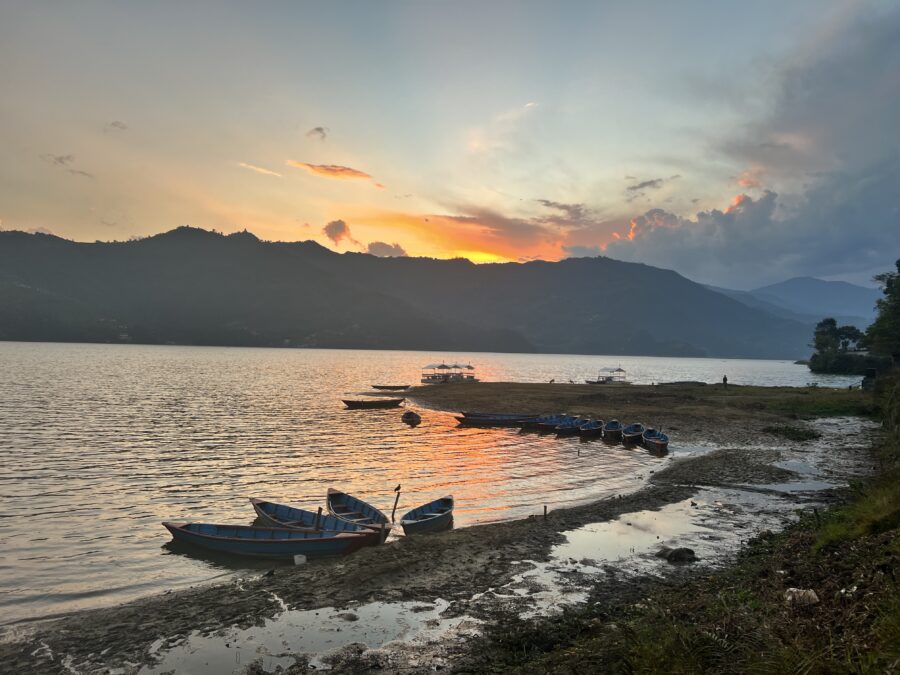

Great blog! Thank you for the info on Peruvian hot springs and Peruvian drinks! I’m taking notes and so excited to visit and try a Chicha morada at the Churin hot springs 🙂
Thank you!! I hope you have the best time in Peru 🙂